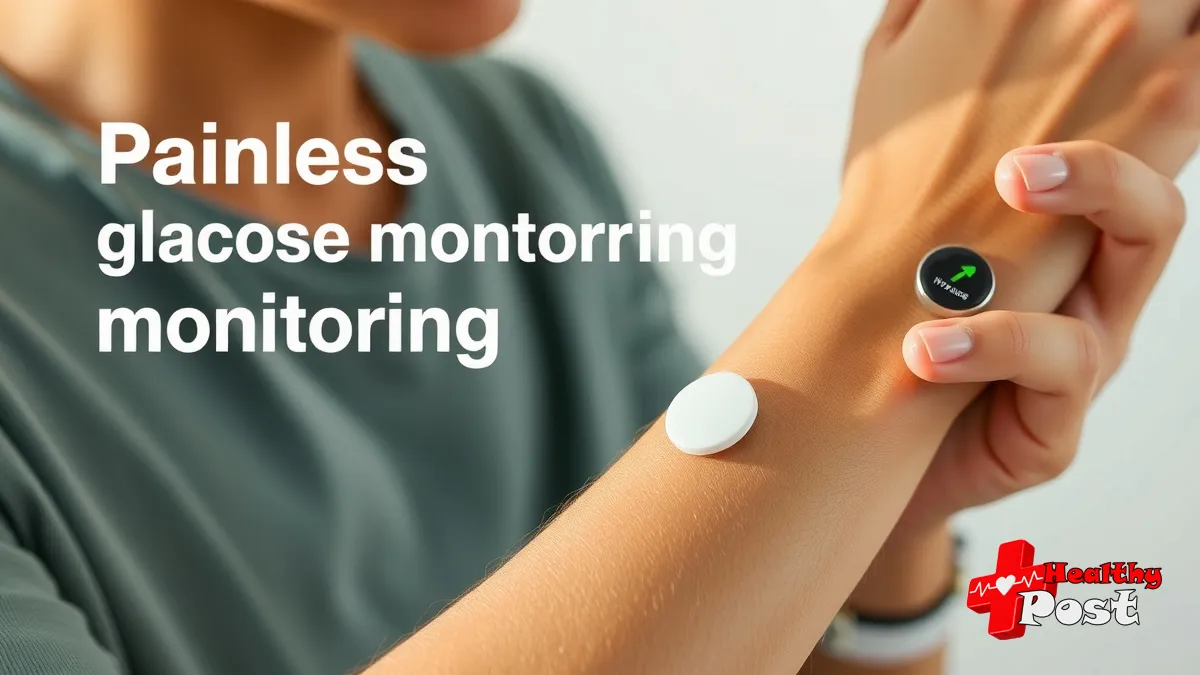
10 Best Blood Sugar Monitor Without Finger Pricks for a Pain-Free Future
Living with diabetes or insulin resistance is hard enough—you shouldn’t also have to dread the sting of lancets several times a day. That’s where a blood sugar monitor without finger pricks comes in. These systems, often called continuous glucose monitors (CGMs), track glucose through a tiny sensor just under your skin, giving you real‑time insights without constant fingersticks. In this guide, we’ll cover the best options, how they work, and the top benefits so you can choose confidently and feel more in control.
Quick note before we dive in: While these devices are designed to reduce or eliminate routine finger pricks, your clinician may still recommend an occasional fingerstick to confirm a reading, especially during rapid changes, symptoms, or device warm‑up periods. Think of CGMs as “dramatically fewer fingersticks,” often “no routine fingersticks,” and a major leap toward comfort, safety, and freedom.
What is a “blood sugar monitor without finger pricks”?
When people say “blood sugar monitor without finger pricks,” they’re usually talking about CGMs—tiny sensors you wear on your arm or abdomen that:
- Continuously measure glucose in interstitial fluid (just below the skin)
- Send data to your phone or a receiver every few minutes
- Provide alerts for highs and lows
- Help you spot patterns and make decisions without constant finger pokes
Most modern CGMs are factory‑calibrated (no routine calibration required), designed for everyday wear, and integrate with smartphone apps for easy tracking and sharing.
Our Top Picks: Best Blood Sugar Monitor Without Finger Pricks
These options are widely used and known for comfort, accuracy, and convenience. Availability varies by region—talk with your healthcare provider and check local approvals.
- Dexcom G7
- Factory‑calibrated, excellent real‑time alerts, short warm‑up, discrete profile
- Strong app ecosystem; integrates with many diabetes apps and some pumps (varies by region)
- Dexcom G6
- Reliable and proven; widely supported across devices and apps
- Slightly larger than G7; still strong for alerts and trend data
- Dexcom ONE / ONE+
- Streamlined version available in select markets
- Designed for simpler experience at potentially lower cost
- FreeStyle Libre 3
- Very small, thin sensor with real‑time streaming
- Factory‑calibrated; excellent balance of comfort and accuracy
- FreeStyle Libre 2
- Popular, budget‑friendly option in many regions
- Alarms for highs/lows; may require scanning depending on configuration
- Medtronic Guardian 4 (with compatible systems)
- Designed to work with advanced insulin pumps and automated features
- Check local labeling for calibration requirements and compatibility
- Wellness and coaching programs using CGMs (availability varies)
- Programs like Nutrisense, Signos, and Levels pair approved CGMs with coaching, analytics, and habit support
- Useful if your goal is lifestyle or weight management alongside glucose awareness
Pro tip: The “best” device is the one that fits your lifestyle, budget, and health goals—sensor size, wear time, alert customization, app features, and coverage/price all matter.
Quick Comparison Table
The table below highlights common features to help you assess what matters most. Always confirm exact specs and approvals for your region.
| Feature | Dexcom G7 | Dexcom G6 | Dexcom ONE/ONE+ | FreeStyle Libre 3 | FreeStyle Libre 2 | Medtronic Guardian 4 |
|---|---|---|---|---|---|---|
| Typical wear duration | ~10 days | ~10 days | ~10 days (varies) | Up to 14 days | Up to 14 days | Up to 7 days (system‑dependent) |
| Factory calibration (no routine fingersticks) | Yes | Yes | Yes (varies) | Yes | Yes | Check labeling |
| Real‑time alerts | Yes | Yes | Yes (varies) | Yes | Yes | Yes |
| App compatibility | iOS/Android | iOS/Android | iOS/Android | iOS/Android | iOS/Android | iOS/Android (with companion pump/app) |
| Size/comfort | Very small | Small | Small | Very small | Small | Small |
| Ecosystem integrations | Strong | Strong | Moderate | Strong | Strong | Pump integration focus |
Good to know:
- CGMs measure interstitial glucose, which can lag behind blood glucose by several minutes—especially after meals, exercise, or insulin.
- Many users see their time‑in‑range improve simply by acting on real‑time alerts, even without finger pricks.
The 10 Biggest Benefits of Using a Blood Sugar Monitor Without Finger Pricks
Below are the ten most meaningful benefits, each explained with simple language, practical tips, and real‑life examples. These are the reasons many people say they’ll never go back.
1) Comfort and consistency without the constant sting
- What it means: You insert a tiny sensor once per wear cycle—often 7, 10, or 14 days—and that’s it. No more routine fingersticks.
- Why it matters: Less pain reduces “diabetes fatigue” and makes it easier to check often, which leads to better decisions.
- Real life: Jess used to check 4–6 times a day. After switching, she checks her phone instead and says she finally stopped putting off checks because they’re painless.
2) Real‑time alerts that protect you from highs and lows
- What it means: You can set custom alerts for low, high, or rapid rate‑of‑change. Your phone or watch nudges you before things get out of hand.
- Why it matters: Early warnings buy you time—whether you need a quick snack to prevent a low or a dose adjustment to blunt a spike.
- Example: Late‑night lows used to catch Sam off‑guard. Now, his “urgent low soon” alert wakes him early enough to correct safely.
3) Trend arrows and graphs that tell the full story
- What it means: Instead of a single number, you see where your glucose is heading and how fast.
- Why it matters: A steady 100 mg/dL is different from 100 and dropping fast. Trend arrows turn reactive decisions into proactive ones.
- Tip: When a meal pushes you upward quickly, a short walk can flatten the curve.
4) Better time‑in‑range, often without big lifestyle overhauls
- What it means: “Time‑in‑range” is the percentage of time your glucose stays within a target window (commonly 70–180 mg/dL, individualized by your clinician).
- Why it matters: Improved time‑in‑range is associated with better daily energy and long‑term outcomes.
- Real life: By noticing that pizza spikes her late at night, Priya learned to pair carbs with more protein and a brief post‑dinner walk. Her time‑in‑range rose 12% in two weeks.
5) Less mental load—your device handles the math
- What it means: Your CGM tracks trends, calculates averages, and summarizes patterns for you.
- Why it matters: Diabetes management is a lot of micro‑decisions. Offloading data tracking frees up headspace for living your life.
- Tip: Check your weekly summaries to find one small tweak (like moving a snack earlier) rather than trying to fix everything at once.
6) Clear insights into food, movement, stress, and sleep
- What it means: You’ll see how different meals, workouts, stressful days, or poor sleep affect your glucose—and how your body uniquely responds.
- Why it matters: Two people can eat the same meal and have totally different glucose responses. Personalization leads to smarter choices.
- Example: After noticing late‑afternoon spikes, Leo found that a 10‑minute walk or a handful of nuts kept his curve steadier before dinner.
7) Effortless data sharing for stronger support
- What it means: Securely share your readings with a caregiver, partner, or healthcare team. They can view patterns and help you adjust your plan.
- Why it matters: Support reduces burnout and catches issues early.
- Real life: Taylor’s partner gets low‑glucose alerts too, which brings peace of mind during long runs and overnight.
8) Better safety during workouts and sleep
- What it means: CGMs watch even when you can’t, like during intense exercise or while you’re asleep.
- Why it matters: Exercise can cause rapid swings; sleep can hide lows. Alerts help you correct sooner and stay safe.
- Tip: Use exercise mode or temporarily adjust alert thresholds around workouts, if your device supports it.
9) Fewer supplies, less mess, more freedom
- What it means: With a blood sugar monitor without finger pricks, you reduce lancets, strips, and alcohol swabs in your daily routine.
- Why it matters: Fewer “diabetes chores” means more time for the things you love.
- Example: When traveling, Mia packs sensors and adhesive patches—that’s it. No bulky test strip boxes, no sharps container.
10) Motivation that sticks because feedback is instant
- What it means: Immediate feedback turns healthy choices into rewarding habits.
- Why it matters: Seeing your graph flatten after a walk or balanced meal is motivating—it proves your effort works.
- Tip: Make it a game. Aim for a slightly higher time‑in‑range this week than last, and celebrate small wins.
How to Choose the Right Blood Sugar Monitor Without Finger Pricks
Everyone’s needs are different. Use this checklist to find your best fit:
- Comfort and wear time
- Do you prefer 10‑day or 14‑day sensors? Is the profile low enough to feel comfortable under clothing?
- Alerts and customization
- Can you set highs, lows, and “rate of change” alerts? Do you want quiet hours or custom alarm tones?
- App experience
- Is the app intuitive? Does it offer clear trend arrows, daily summaries, and easy data sharing?
- Integrations
- Do you use a smart watch, insulin pump, or a specific health app? Check compatibility first.
- Cost and coverage
- Look into insurance coverage, co‑pays, and sensor pricing. Subscription or pharmacy options can simplify refills.
- Availability in your region
- Names and features vary by country. Confirm local approvals and labeling.
- Calibration requirements
- Many systems are factory‑calibrated and designed for “no routine fingersticks.” In some cases, a fingerstick may still be suggested.
Practical Tips to Get the Most from Your CGM
- Placement and adhesion
- Follow the insertion guide carefully and use approved adhesives if needed (over‑patches help during workouts or hot weather).
- Warm‑up periods
- Sensors need a brief warm‑up before they start reading. Plan insertions during low‑stress times.
- Calibrations and confirmations
- Even with “no routine fingersticks,” confirm with a fingerstick if your symptoms don’t match the reading or during rapid changes.
- Alert fatigue
- Start with slightly wider alert thresholds, then tighten as you get used to the notifications.
- Patterns over single numbers
- Focus on trends and weekly time‑in‑range, not just one reading.
Who Benefits Most from a Blood Sugar Monitor Without Finger Pricks?
- People using insulin (basal/bolus or pumps) who need frequent checks and real‑time alerts
- Those newly diagnosed who want clearer feedback while learning
- Individuals seeking lifestyle improvements—weight, energy, sleep—through glucose awareness
- Parents and caregivers who need remote alerts for loved ones
- Athletes who want to monitor fuel and prevent exercise‑related lows
If you’re unsure whether a CGM fits your situation, ask your healthcare provider. They can help match your goals to the right device and settings.
FAQs
- Is a CGM completely fingerstick‑free?
- Many systems are factory‑calibrated and designed for no routine finger pricks. Still, your care team may recommend occasional confirmatory checks, especially if symptoms and readings don’t match.
- Are CGMs accurate?
- Modern systems are highly accurate for everyday use. Remember there’s a brief lag versus blood glucose, especially after meals or exercise.
- Can I swim or shower with it?
- Many sensors are water‑resistant. Check your device’s specific guidelines for depth and duration.
- How long do sensors last?
- Common wear times are 7, 10, or 14 days, depending on the model.
- Do CGMs work without a smartphone?
- Some systems offer dedicated receivers. Most support iOS/Android apps for convenience.


2 thoughts on “10 Best Blood Sugar Monitor Without Finger Pricks for a Pain-Free Future”